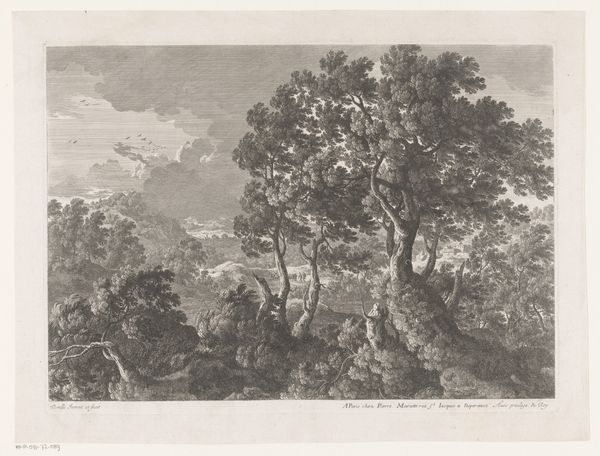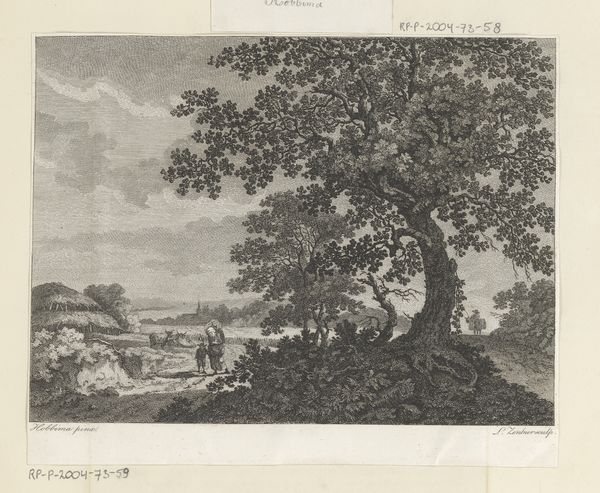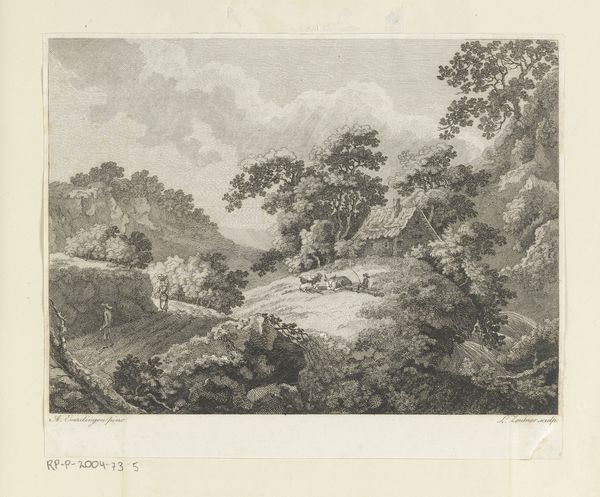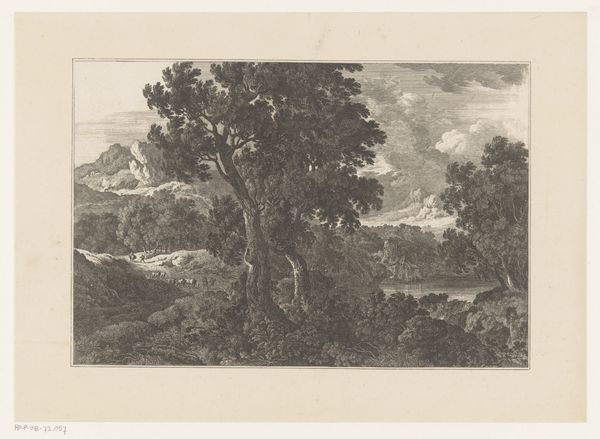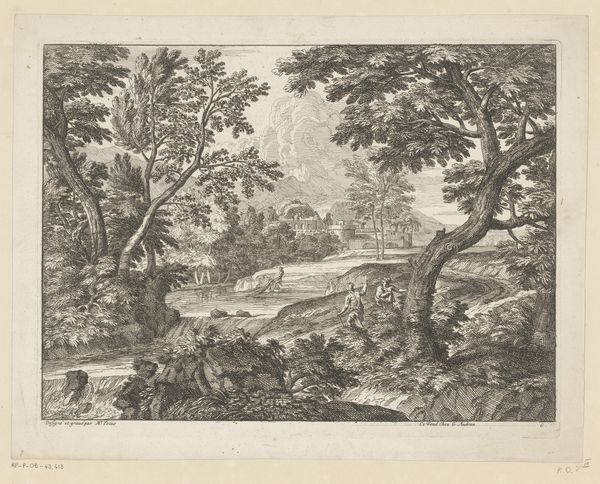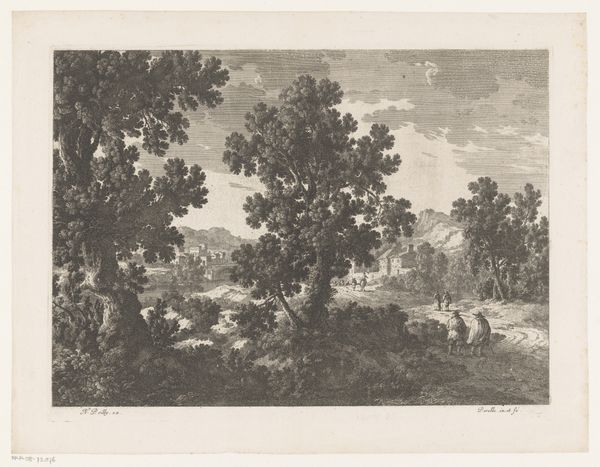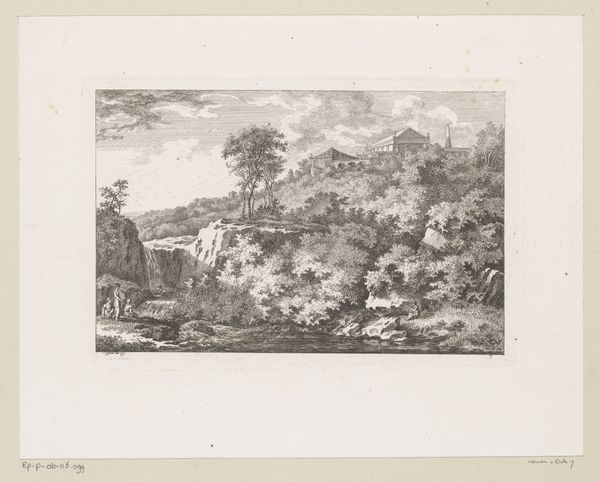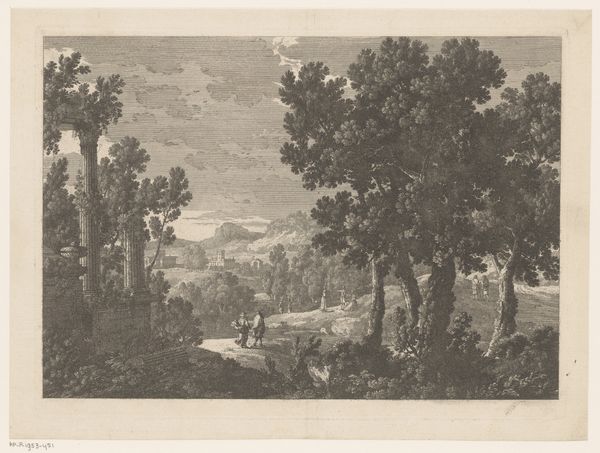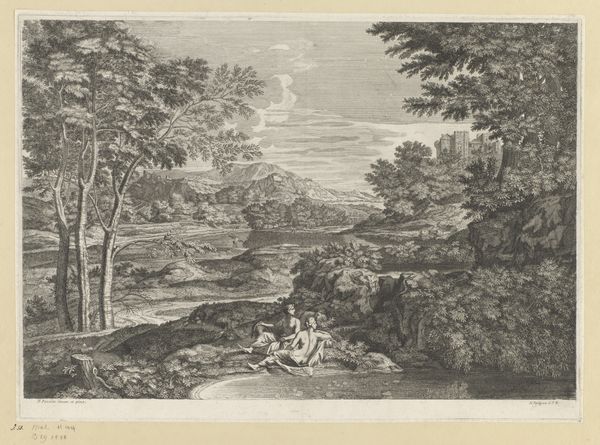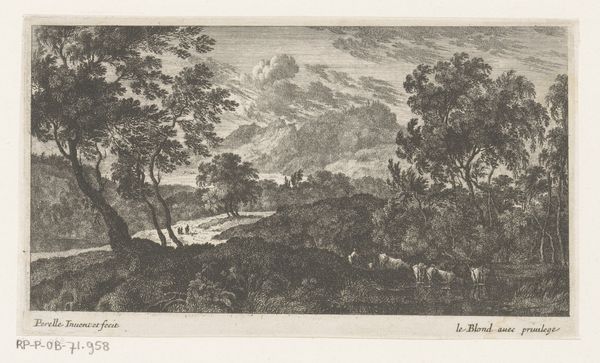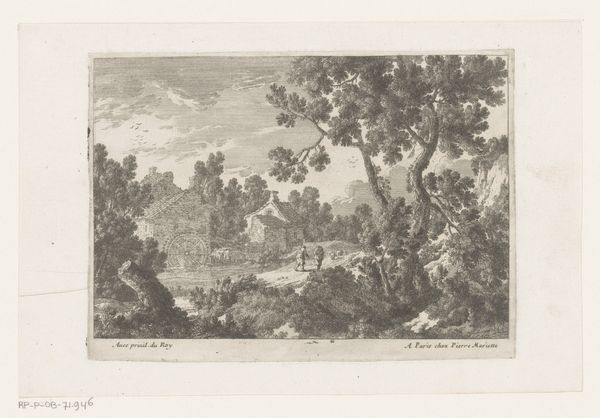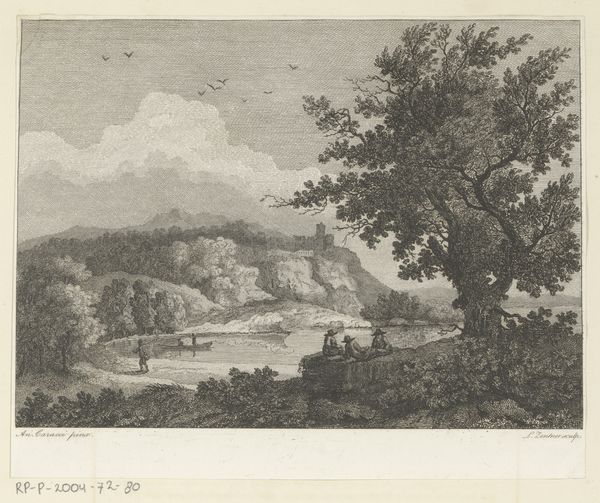
print, etching
#
neoclacissism
# print
#
etching
#
landscape
#
genre-painting
Dimensions: height 163 mm, width 200 mm
Copyright: Rijks Museum: Open Domain
Curator: This etching, "Heuvellandschap met figuren op een landweg," which translates to "Hilly Landscape with Figures on a Country Road," was created by J.L.L.C. Zentner between 1791 and 1798. It's a fascinating example of late 18th-century Neoclassical landscape art. Editor: It feels so…contained. Everything’s neatly arranged, the light is evenly distributed, and even the rough landscape feels quite mannered. It's serene, almost staged, yet that road hints at social narratives. Who are these figures and where are they headed? Curator: The Neoclassical period embraced order and reason, often idealizing nature rather than portraying it realistically. Landscapes weren't just backgrounds, they reflected a moral order and societal structure. Genre scenes became popular during this period because artists were interested in conveying stories and commentary within these tranquil landscapes. Editor: Exactly. This piece reminds me how land ownership was depicted during this period of stark socio-economic division. It brings up important questions about representation – whose land is this really, who is granted access, and who gets to own the narrative? Curator: Those are crucial questions. Zentner's artistic choice also reveals the influence of the Picturesque movement, seeking controlled and beautiful views that often reinforced the status quo. Etchings like these were often reproduced and distributed widely, shaping public perceptions of the natural world and its place within a social context. Editor: You can really feel the hand of power at play when considering that it was distributed widely to the public. While ostensibly representing nature, it arguably shaped consent around how land was used, by those same social systems. And notice how small the figures are in comparison to the land itself! Curator: It emphasizes their humble place in the world. A key takeaway here is that we need to consider the broader impact. While Zentner crafted a visually appealing scene, we should explore how it played into the existing social fabric, particularly surrounding land usage and power distribution at the time. Editor: Absolutely. It reminds us that art is never created in a vacuum. Considering the socio-political context enables us to actively unpack these beautiful images and better understand what stories they reinforce and who may be missing from the picture.
Comments
No comments
Be the first to comment and join the conversation on the ultimate creative platform.
